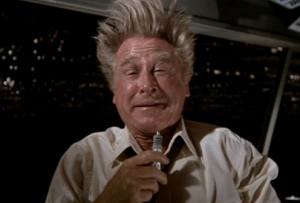 Air France Flight 447 crashed into the Atlantic Ocean on June 1, 2009, killing all 216 passengers and 12 crew. The flight from Rio de Janeiro to Paris involved an Airbus 330, one of the most advanced airplanes.
Air France Flight 447 crashed into the Atlantic Ocean on June 1, 2009, killing all 216 passengers and 12 crew. The flight from Rio de Janeiro to Paris involved an Airbus 330, one of the most advanced airplanes.
The plane’s speed sensors iced over, igniting a chain reaction of signal overload and pilot confusion. If the pilots had followed standard operating procedures, they most certainly would have recovered.
The plane’s black box, recovered two years later, surfaced how technology and automation — relied on for safety and productivity — may have had the unfortunate outcome of preventing pilots from gaining the experience and sensitivity required to take command during abnormal situations.
According to Popular Mechanics: “While the airplane’s avionics track crucial parameters such as location, speed, and heading, the human beings can pay attention to something else. But when trouble suddenly springs up and the computer decides that it can no longer cope on a dark night, perhaps, in turbulence, far from land the humans might find themselves with a very incomplete notion of what’s going on. They’ll wonder: What instruments are reliable, and which can’t be trusted? What’s the most pressing threat? What’s going on? Unfortunately, the vast majority of pilots will have little experience in finding the answers.”
This problem is not limited to aviation. It is not uncommon for boaters (especially powerboaters) to set their electronic chart plotters and automated self-steering systems to aim for navigational buoys — only to take their mind off navigating and subsequently collide into those very buoys. It is not uncommon for drivers to drive off roads or collide with other cars, because their GPS systems told them to stay on course. I even know of people with poor eyesight who still drive because their GPS tells them where to go, when to turn, and when to slow down (and this makes me furious).
I work in marketing at a technology services company, so I often think about how the automation revolution impacts marketing companies. Automation touches many tactical and operational areas of large companies, but data and intelligence are most strategic.
Over the past few months, I’ve had multiple conversations with senior marketing and systems leaders from Fortune 100 companies. A theme has surfaced: While marketing automation is powerful and getting more sophisticated, one of the downsides is the deployment of executive-level performance dashboards that are simplistic, overly static and passive.
After two or three decades in business, many executives want to apply their experience and instincts to connecting the dots among disparate data points. The challenge is, many executive dashboards have evolved with limited ability for senior leaders to directly and easily manipulate and compare data. This may prevent serendipitous insights from surfacing, and creates more distance between senior leaders and the operational front lines, especially where customer experience happens.
What’s next? Senior business leaders will continue to demand executive-level dashboards with holistic views, typically curated by specialized business analysts. However, expect a growing demand for executive-level dashboards and platforms that also enable them to easily drill into details, to integrate and compare seemingly unrelated data, and to quickly perform ad-hoc analyses that facilitate discovery. Smart, seasoned executives want to get their hands dirty, surface important questions for further study, and become more connected through their own immersion.
Automation can be powerful. It should drive efficiency, scale and control, but it also should empower senior leadership to become more astute and do what machines cannot always do on their own: sense and respond to the abnormal.
This article also ran in MediaPost.

Max great post. Indeed the worse thing is to be blind while believing you can see farther than others
Thanks Filippo. It was great to meet you, and thanks for the insights and part inspiration for this essay.